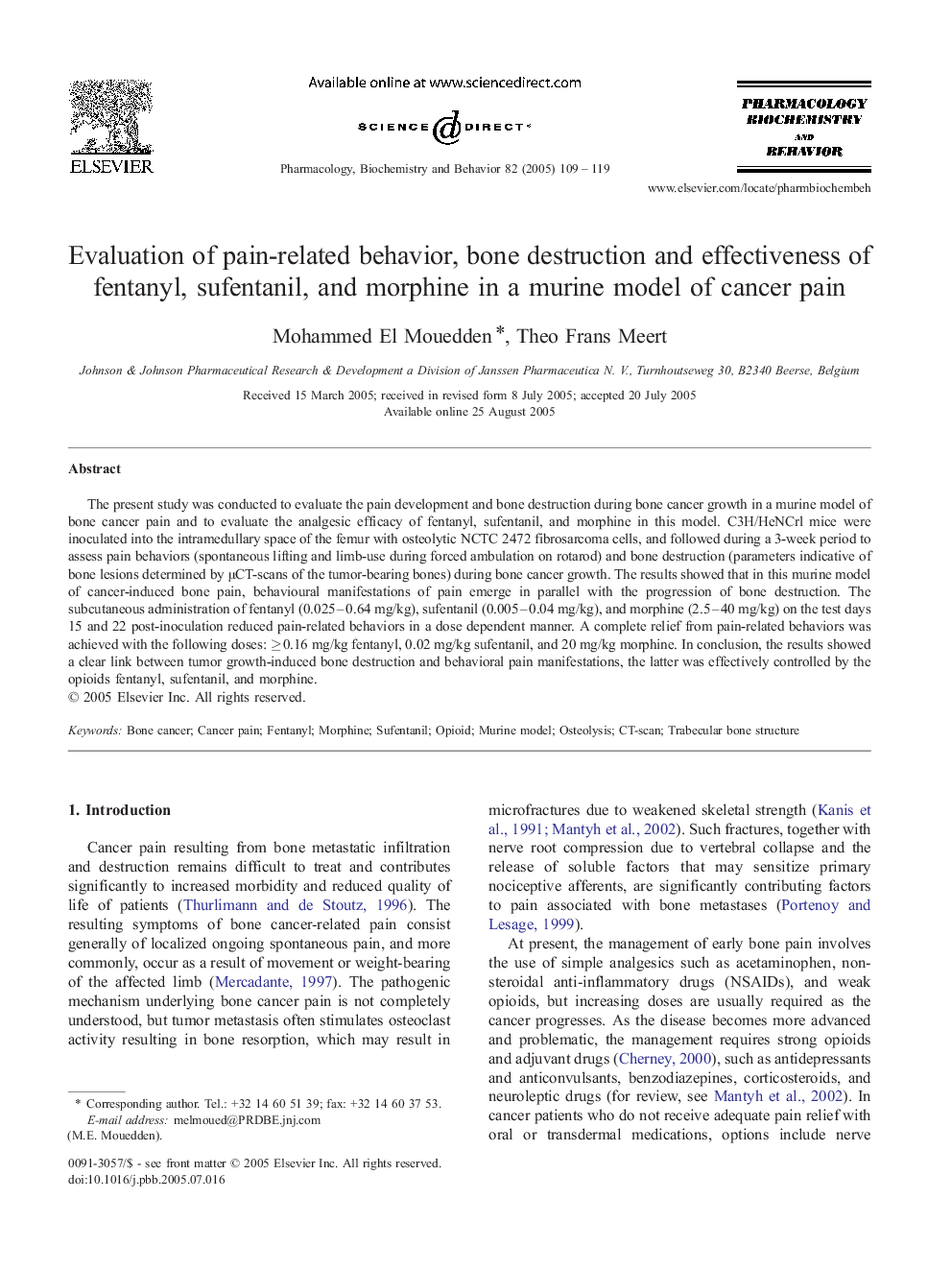| Article ID | Journal | Published Year | Pages | File Type |
|---|---|---|---|---|
| 10838367 | Pharmacology Biochemistry and Behavior | 2005 | 11 Pages |
Abstract
The present study was conducted to evaluate the pain development and bone destruction during bone cancer growth in a murine model of bone cancer pain and to evaluate the analgesic efficacy of fentanyl, sufentanil, and morphine in this model. C3H/HeNCrl mice were inoculated into the intramedullary space of the femur with osteolytic NCTC 2472 fibrosarcoma cells, and followed during a 3-week period to assess pain behaviors (spontaneous lifting and limb-use during forced ambulation on rotarod) and bone destruction (parameters indicative of bone lesions determined by μCT-scans of the tumor-bearing bones) during bone cancer growth. The results showed that in this murine model of cancer-induced bone pain, behavioural manifestations of pain emerge in parallel with the progression of bone destruction. The subcutaneous administration of fentanyl (0.025-0.64 mg/kg), sufentanil (0.005-0.04 mg/kg), and morphine (2.5-40 mg/kg) on the test days 15 and 22 post-inoculation reduced pain-related behaviors in a dose dependent manner. A complete relief from pain-related behaviors was achieved with the following doses: â¥Â 0.16 mg/kg fentanyl, 0.02 mg/kg sufentanil, and 20 mg/kg morphine. In conclusion, the results showed a clear link between tumor growth-induced bone destruction and behavioral pain manifestations, the latter was effectively controlled by the opioids fentanyl, sufentanil, and morphine.
Keywords
Related Topics
Life Sciences
Biochemistry, Genetics and Molecular Biology
Biochemistry
Authors
Mohammed El Mouedden, Theo Frans Meert,
